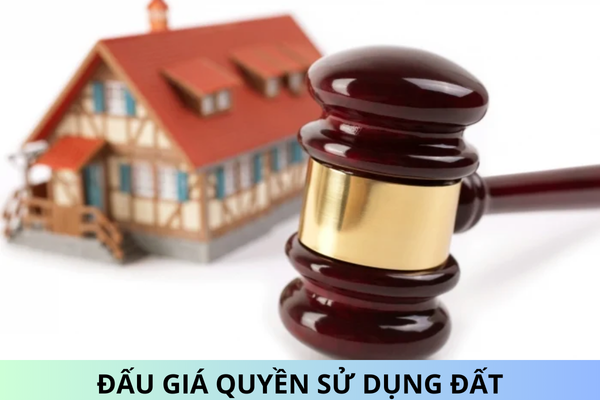What are regulations on the private areas in an apartment in Vietnam?
What are regulations on the private areas in an apartment in Vietnam? What are regulations on the common areas in an apartment building in Vietnam? What are regulations on establishment and operation of the management board of the apartment building in Vietnam?
What are regulations on the private areas in an apartment in Vietnam?
Hello Lawnet. I am Hoang Nam. I am wishing to learn the provisions of the law related to the ownership, development, management and use of housing; housing transactions; State management of housing in Vietnam. I have a question: What are regulations on the private areas in an apartment in Vietnam? Which legal documents can I find the information? Thank you!
Hoang Nam (hoangnam*****@gmail.com)
Answer:
Pursuant to Clause 1 Article 100 of the Law on Housing in 2014 stipulating the private areas in an apartment in Vietnam as follows:
The private areas in an apartment building include:
- The interior of apartments including balconies, loggias attached to those apartments;
- Other areas in the apartment building which are under private ownership of the homeowner of the apartment building;
- System of private technical equipment attached to the apartments and other areas under private ownership.
Pursuant to Article 6 of the the Regulation on management and use of apartment buildings issued together with the Circular 02/2016/TT-BXD stipulating management of privately owned portion of multi-owner apartment as follows:
- Privately owned area or equipment as prescribed in Clause 1, Article 100 of the Law on Housing should be specified in apartment purchase and sale contract, apartment lease purchase contract or area other than the apartment (hereinafter referred to as ‘the purchase and lease purchase contract').
Apart from the purchase and lease purchase contract, the investor should provide the drawings as prescribed in Point d, Clause 2, Article 5, this Regulation to buyers, tenants.
- If the purchase and lease purchase contract is signed before the effective date of this Regulation, definition of privately owned area and equipment as well as provision of the drawings shall be instructed in the Law on Housing at the time of signing or based on the purchase and lease purchase contract if not prescribed by laws.
- Apartment owners may directly use or authorize others to manage their privately owned portion but should ensure that the use and management of such portion accord with approved designs and do not affect other privately-owned area of other owners or shared area of the apartment.
Please refer to the Law on Housing in 2014 for further information.

What are regulations on the common areas in an apartment building in Vietnam?
Hello Lawnet. I am Hoang Nam. I am wishing to learn the provisions of the law related to the ownership, development, management and use of housing; housing transactions; State management of housing in Vietnam. I have a question: What are regulations on the common areas in an apartment building in Vietnam? Which legal documents can I find information? Thank you!
Hoang Nam (hoangnam*****@gmail.com)
Answer:
Pursuant to Clause 2 Article 100 of the Law on Housing in 2014, the common areas in an apartment building include:
- The remaining area of the apartment building except for the private areas mentioned in Clause 1 of this Article; the community center of the apartment building;
- Shared areas and supporting structure systems, technical equipment in the apartment building including frames, columns, load-bearing walls, enclosing walls, apartment-dividing walls, floors, roofs, terraces, corridors, stairways, elevators, emergency exits, garbage chute, systems of electricity supply, water supply, gas supply, communication system, radio, television, drainage, septic tanks, lightning conductors, fire fighting and other parts not under private ownership of the apartment building’s homeowners;
- Exterior technical infrastructure but connected to the apartment building, except for technical infrastructure system which is used for public purposes or required to transfer to the State or the investor in charge of the approved project;
- Public constructions in the apartment building area which are not built for commercial purposes or required to transfer to the State according to the approved project include public yards, flower gardens and other constructions mentioned in the approved residential construction project.
Pursuant to Article 7 of the the Regulation on management and use of apartment buildings issued together with the Circular 02/2016/TT-BXD stipulating management of shared portion of multi-owner apartment buildings as follows:
- Commonly owned area or equipment system of the apartment is defined according to Clause 2, Article 100 of the Law on Housing and should be specified in the purchase and lease purchase contract. The purchase and lease purchase contract should be accompanied by the lists of shared portion according to the Law on Housing; such portion should be used purposefully and in accordance with approved designs.
- The investor shall be responsible for managing the works designed for leisure activities of apartment owners, occupants and subject to be handed over to the State for management under the approved project.
- If these works are constructed for business by the investor itself according to contents of the approved project, the investor shall have the ownership thereto and be responsible for managing and maintaining these works.
- For shared portion of the residential apartment block, the owners thereto shall be responsible for managing such portion together; if an apartment requires the managing unit, such portion shall be transferred to the managing unit for management; if an apartment does not require the managing unit, the Management Board or other managing units shall be chosen for management.
- For shared portion of mixed-use apartment block, management shall be instructed as follows:
+ If shared portions of the office, service and commercial areas (hereinafter referred to as ‘the functional area’) and residential apartment buildings is undefinable, the owners thereto shall be responsible for managing such portions together.
+ If such portion is separately definable, the shared portion of the residential apartment shall be managed by owners of residential apartment buildings and the shared portion of the functional area shall be managed by the managing unit or by owners of this functional area if the managing unit is not required by the apartment building. The management of this shared portion is instructed in Clause 4, this Article.
For commonly owned portions of an entire apartment building, all the apartment building owners shall be responsible for managing such portions together; the management of such portions is instructed in Clause 4, this Article.
- For community activity houses of the apartment block, owners or the Management Board (if any) or the managing unit shall be responsible for managing such houses according to decision given in the apartment building meeting.
- For commonly owned portions of an apartment complex, the Management Board shall be responsible for managing such portions on behalf of owners.
- If the purchase and lease purchase contract is signed before the effective date of this Regulation, definition of commonly owned portion of apartment building is instructed in the Law on Housing at the time of signing or based on the purchase and lease purchase contract if not prescribed by laws.
Please refer to the Law on Housing in 2014 for further information.
What are regulations on establishment and operation of the management board of the apartment building in Vietnam?
Hello Lawnet. I am Hoang Quan. I am wishing to learn the provisions of the law related to the ownership, development, management and use of housing; housing transactions; State management of housing in Vietnam. I have a question: What are regulations on establishment and operation of the management board of the apartment building in Vietnam? Which legal documents can I find information? Thank you!
Hoang Quan (hoangquan*****@gmail.com)
Answer:
Pursuant to Article 103 of the Law on Housing in 2014 stipulating establishment and operation of the management board of the apartment building in Vietnam as follows:
- If the apartment building has fewer than 20 apartments regardless of single-owner building or multi-owner building, the homeowner(s) and/or the occupiers of the apartment building shall decide whether to set up or not set up the Management board of the apartment building; if the Management board of the apartment building is set up, it shall follow the procedures below:
+ Regarding the multi-owner building, the components of the Management board shall include the representative of the owner and the occupiers;
+ Regarding the multi-owner building, the components of Management board of the apartment building shall comply with Clause 2 of this Article.
- Regarding the apartment building having 20 apartments or above, it is required to set up the Management board of the apartment building. The members of the Management board of the apartment building shall include apartment building’s owners, representatives of the investor(s) (if any); in case the occupiers also attend the Apartment building meeting, the members of the Management board of the apartment building may include the occupiers.
- The Management board of the single-owner building shall be organized under autonomous model. The Management board of the multi-owner building shall be organized under model of Board of Directors of a joint-stock company or under model of Chairman of Board of Cooperatives, which has legal status, seal and exercise the rights and fulfill obligations as prescribed in Clause 1 Article 104 of this Law.
When electing or dismissing members of the Management board of the apartment building, the homeowners or occupiers of the apartment building are not required to set up a joint-stock company or a cooperative; the members of the Management board shall be elected or dismissed through the Apartment building meeting according to the Statute of management and use of apartment buildings issued by the Minister of Construction.
Best regards!










